This is the fifth post in my six-part series, “How I Sold $100K My First Year in Business.” Takeaways #7 & #8 from my first-year success in the wedding photography business are:
#7. I trusted my instincts. When I first started my photography business, I shot and sold in the way that felt right for me — and it turns out my instincts were pretty good. (This was before I started listening to other photographers and following industry advice. More on that later.)
Regarding sales, the first rule is listening. This Forbes article is a good summary of how I approached the sales process. After hellos and small talk, the first question I asked every client was along the lines of, “What do you envision for your wedding day?” or “What are you looking for in your wedding photography?” Questions like this not only take the pressure off you to present but they also make your prospective client feel special and heard. I was also honest about my style and, if what someone wanted didn’t sound like what I could deliver, I offered referrals to other photographers.
My natural tendency was toward very relaxed, relationship-focused photography. I enjoyed watching genuine interactions between people and capturing the pinnacle of each moment. My best referral source for portraits—a transplant from California to Virginia, and a lady I still call my “super fan”—had been looking for exactly that style and couldn’t find it locally until she found me. She was very clear on what she wanted and she loved her session results, so she subsequently referred me to lots of folks.
After my initial business success, you’d think I would have continued to trust my instincts. But I was young and still learning, and so when a more experienced peer told me that people prefer tender, camera-aware images of their children, I listened to her. And that was just the start of my struggles. Listening to other photographers and accepting common industry advice—instead of my own wisdom—led me to burnout and is part of the reason I’m no longer a photographer. For more lessons from my burnout, check out this post. But, for now, let’s move on to more secrets of my success.
#8. I looked and acted the part. Whether we like it or not, first impressions matter! When you’re asking someone to trust you enough to spend their hard-earned money with you, you have to look and act appropriately. Even if you work at home in your pajamas, when you meet with clients you have to look like you’ve come from a professional environment. As a creative entrepreneur, this doesn’t necessarily warrant a suit or full-on interview attire, but remember that this is your only chance to demonstrate that that you are a professional and that you’ll fit in at their event. This seems obvious, but I’m frequently surprised by what people consider appropriate work attire and etiquette. (As an example, if you smoke, you might want to skip that nicotine fix right before meeting a prospect. Is it worth the risk that they’ll find the smell offensive? You decide.)
For more, check out this post on how professional dress affects your productivity.
We’re almost done with my six-part series on business success. Any burning questions remaining before the final post goes up next week? Let me know in the comments.
Thanks,

If you missed a post in my “Business Success” series, here they all are in order:
2013 turned out to be a year for learning and self-exploration. Since returning to Silicon Valley in 2011, I’ve undertaken to understand what matters most to me in this life and what steps I need to take to live in more alignment. As you’ll see in this recap, I experienced a lot of aha moments during 2013 but I did not always heed them—which gives you a hint at an area of focus for 2014 (up next week).
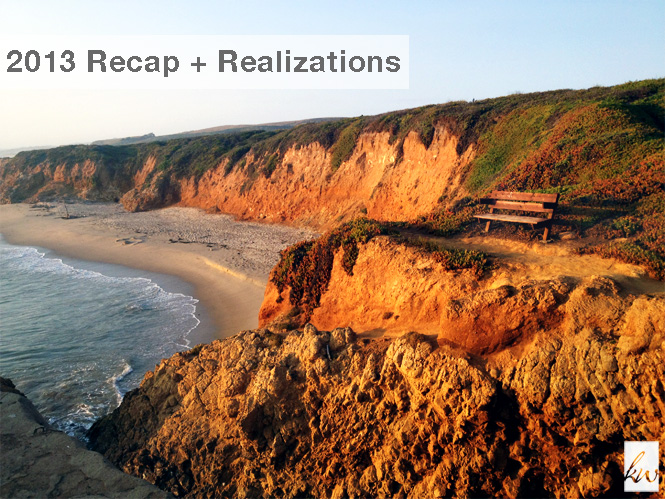 Home sweet home – near Pescadero State Beach, California 2013 Recap
In January, I left my gig with Urban Darling and applied for a graduate certificate program in social enterprise management and impact investing. When I was accepted into the Frontier Market Scouts (FMS) summer program, I was all set to go on a two- to six-month international field study after the classroom intensive.
But in March, after taking my mom to Costa Rica for her birthday, I realized that I was tired of international travel. (My husband and I traveled full-time during 2010 and 2011, which you can read about here.) My adventurous streak was winding down and my homemaking drive was skyrocketing. I resolved to stay in the States for my field study.
In May, while in Hawaii celebrating our anniversary, I prepared for FMS, completing a pre-assignment and reviewing/ranking field placement options (all of which were international). When I read about Educate!, a Ugandan social enterprise that promotes youth leadership and entrepreneurship, my intuition screamed yes! Not surprising given that I am an advocate (CASA) for foster youth, a wannabe adoptive mom and, for my pre-FMS assignment, I wrote about my dream social enterprise, which would provide entrepreneurial education for at-risk youth. Naturally, I ranked Educate! number one on my placement list…
But it was not meant to be. I was instead referred to an impact investor and thus began a lot of over-thinking regarding my field placement: Could I find something in the Bay Area? Educate! sounds like an amazing organization… Impact investing is difficult to get into; maybe I should just take the opportunity to try it since it’s been offered… You get the idea.
FMS consisted of 8+ hours of class followed by happy hour and networking followed by homework assignments…for 14 days straight. It was fabulous but I returned home exhausted and without my field placement decided. I had three options in play. Here’s another time where signs and intuition were present—but I wasn’t fully listening.
My first placement opportunity—scouting civic ventures for the Points of Light Civic Accelerator—came together easily. I was initially surprised that, although the work was outside my comfort zone, it called to me, and I ended up having a great time meeting social entrepreneurs and learning about their organizations all summer long.
I had reservations about the second option from the time it was mentioned, but one of the program directors literally told me, “You’d be a fool not to take it.” So I did, and it turns out I was foolish to go against my own inner wisdom. Total crash and burn.
While working remotely for the two organizations above, I was also in talks with Accion Venture Lab, a seed stage impact investor. Their Bangalore, India office needed help with pipeline development and due diligence of new investment opportunities, and I was invited to join them in November. This was a really tough decision because, on the one hand, I wanted to experience impact investing, but on the other hand, I was SO tired of travel. I ultimately decided it would be a good learning experience and that, after the crash and burn of placement two, I needed to “redeem myself.”
Looking back now, I have no idea why I felt I needed to redeem myself. POL was still happy with my work, after all, but there it is.
During the summer, I also felt called back to my work with Art Aligned and wanted to finally launch my self-study course for photographers. I’d put Art Aligned on hold during 2012 to work with Urban Darling, but it was wonderful to reconnect with that material and people who inspired me in the field.
At the end of November, I flew to Bangalore and have been working here with Accion ever since (while also preparing my Art Aligned Self-Study Guide to launch January 7th!). I was right that Accion has been a good learning experience, but I definitely miss home.
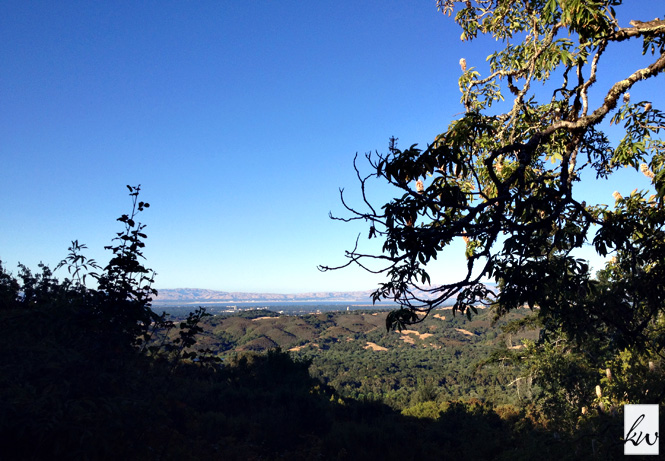 A view of Silicon Valley from one of my favorite hiking trails in the Santa Cruz Mountains 2013 Realizations
-
Travel – I need a break from living overseas and international travel. If I get any crazy ideas about going somewhere exotic later in 2014, feel free to remind me about what I just wrote!
-
Home – I adore my adopted home in California and I want to expand ties and deepen roots there.
-
Family – I’m also mentally ready to grow my family. One of my life callings is to adopt teenagers (yes, seriously!). Don’t look for any announcements just yet, though, because the next step is convincing my slow-moving, methodical husband to get on board this train.
-
Callings vs ego – I’ve been exploring callings for a few years now, through several outlets, including Tara Mohr’s Playing Big workshop. Late in 2013, the concept of ego started appearing in my consciousness, which culminated in reading a great article by Shelley Prevost just last month. As a result, I’ve gained such clarity on where I truly feel called vs. where my ego just thought I should be working. Look for lots of progress in this area during 2014.
- Success – Early in 2013, I realized that I had been allowing something that happened in 2007 to cripple me professionally. I felt on some level that I would be punished if I was too successful so I’ve been playing small. I started shifting on this throughout 2013 and am looking ahead to a brighter year in 2014.
-
Money – I was raised with a scarcity mentality. For years I’ve worked on this topic but it wasn’t until reading Lynne Twist’s The Soul of Money this year that I felt a big shift. I now view money as a flow and look at life from a mindset of sufficiency.
-
Intuition – Intuition played a big role in 2013, but I frequently put it at odds with logic. In 2014, I resolve to deepen my understanding of intuition and its role in my life.
So, there you have it: My 2013 recap and realizations. If you made it through this monster post, I’m impressed. Kudos to you!
What about you? What did you learn or realize in 2013?
Happy New Year,

This is the fourth post in my six-part series, “How I Sold $100K My First Year in Business.” Looking back on my first year of photography business success, my fifth and sixth takeaways are:
#5. I was in a right-sized market. My initial home base had a population of 1.6 million people, providing sufficient prospects to fill the pipeline while remaining small enough for me to get noticed. Also, it was 2006-2007 when traditional advertising still worked (but that’s another story).
When I moved to the San Francisco Bay Area in 2008, it was much slower-going. A metropolitan area of 7M+ people, there was a lot more noise to break through to get my message across. During my first full year in California (2009), for example, I shot only nine weddings vs. 30 two years prior.
Where you’re located can make a big difference in how quickly your business takes off. Tiny markets make it easy to get the word out about what you’re doing, but they also may be too small to support the number of photographers (or other creative entrepreneurs) present. Major metropolitan areas offer opportunities for long-term pipeline development but can make it very difficult to get known not only due to their sheer size but also because of added competition. However, I know people who have built strong businesses in markets of all sizes; what’s required to do so beyond perseverance typically varies by location, of course.
#6. I was probably too cheap. Most prospective clients booked me. Of 38 appointments scheduled with wedding prospects during year one, 27 booked me (that’s 71 percent!). My remaining wedding clients that year booked without an in-person meeting. This stat suggests that my prices were too low. It may seem hard to believe when you see the sales chart below, but why else would close to three out of every four prospects book? There were plenty of other talented and personable photographers in the market.

Pricing is a big decision for any entrepreneur, and in many cases it requires some trial and error. While you have to sell your services and products to make enough money to cover costs—you don’t have a business without that—there’s wiggle room in how much more than your costs you need to charge. Common wisdom says that charging somewhere in the ballpark of two- to four-times product costs can produce a viable business, but pricing services can be a bit more challenging. Here’s a decent guide to the topic.
Do you have any market or pricing tips you’d like to share? Let me know in the comments.
Cheers,

If you missed a post in my “Business Success” series, here they all are in order:
This is the third post in my series, “How I Sold $100K My First Year in Business.” My next takeaways, looking back on my first year in wedding and portrait photography, are:
#3. I surrounded myself with successful peers & got their referrals. One of the charms of wedding photography is that there are only only 52 Saturdays each year—even fewer during peak season!—and most photographers shoot only one wedding per day. If photographer-friends were already booked, they referred prospective clients to me and vice versa.
I also networked with related service providers, including florists, wedding planners, and venues, but having a peer network of photographers proved more valuable for me. I think wedding photography is just that kind of service. Other entrepreneurs are likely to achieve business success garnering referrals from complementary services; for example, web developers probably get more referrals from graphic designers than other developers. Any other service providers want to share their experience on this one?
You might be wondering how I surrounded myself with successful peers? Well, I second-shot for them. For free. To build my portfolio. By doing that, I was able to learn from experienced professionals and I met a bunch of people in the industry. There’s something to be said about being surrounded by people who have what you want (in fact, Kate Northrup recently wrote about this). Surrounding yourself with people successful in business breeds business success for you, too, because it helps you believe you can be successful.
#4. I was excited. I was doing something I loved and it showed. I was happy to meet with clients and hear about their plans. I answered my phone every time it rang. I responded to email promptly. I generally made it easy for clients to connect with me.
In fact, I booked my second solo wedding primarily because I answered the phone… Seriously. A bride had just fired her wedding photographer less than a month before her wedding and she was crying when I picked up the phone. Heck yes, I was nervous—after all she was still crying, she’d just fired another photographer, and I had to wonder if she was a bit crazy!—but we set up an appointment to meet and the rest is history. She and her fiance liked, hired, and paid me on the spot. Her wedding was at one of the area’s premier venues and she and the event were absolutely gorgeous. Everything went well, the couple proved to be dream clients, and they became one of my biggest referral sources—and close friends—in the year that followed. Months later, I learned that she had called several big-name local photographers before me, but I was the first to answer. How ’bout them apples?
Any questions from these two takeaways? Let me know in the comments.
Thanks,

If you missed a post in my “Business Success” series, here they all are in order:
When you’re traveling, there are inevitably some days when you wish you could just teleport back to the comforts of home. Today is one of those days. There’s nothing in particular that sets off a day like this for me; it’s always a combination of things, little annoyances that grow into a festering pile of the blarghs. Among those today are:
- the inability to top off my pre-paid cell phone (our bank won’t communicate with Airtel India, despite many attempts and conversations about where we are and why they need to)
- the difficulty of hand-washing and drying everything, from dishes to laundry—and learning new systems to do so
- the little foibles of cooking and eating in a foreign country
- the length of time everything takes. For reference, think how long something should take, and double it, then double it again for good measure.
Yeah, that about covers it. Any one thing on its own and I’m fine, but today, for whatever reason, both Brian and I are in the full-on grumps. What do you do when you’re in the grumps? I distract myself; hence, the blog writing…
Thinking of the comforts of home reminded me that I haven’t posted about my fifth watercolor painting, a view of the Golden Gate Bridge from Baker Beach. Baker is one of my area favorites for its sheer beauty. Here’s the inspiration photo:

And here’s the final painting:

I thought I’d take this opportunity to share the process for building a painting like this one, step by step (you can also skip ahead to the end to watch an animation of the whole process):
- Step one is to trace the major elements of an image onto my watercolor paper.
- I began by adding some thalo blue in the upper corners, painting wet on wet.
- Next I did two more washes of blue until I was happy with the color. When watercolors are wet, they’re darker, so you have to wait until the painting is dry to see what you think. Also, to avoid blossoms—aka screw-ups, which you’ll see later—you often have to wait for the painting to dry between washes.
- Then I added masking fluid in the water to preserve highlights.
- Using a richer mix of thalo blue, I painted in the ocean wet on dry because it’s a small space and easy to blend together.
- Next I moved to the foreground ice plants, a large space that had to be completed wet on wet to avoid hard edges. As you can see in the inspiration, there are basically two swaths of ice plants—those in the foreground that are large and completely soft-focused, and those in the middle that are smaller and a bit sharper. Thus I painted the plants in two rounds, starting with the small, sharper plants. IIRC, the colors used here are transparent yellow, hooker’s green, olive green, and permanent rose.
- This next step was one of the hardest because it involved methodically covering one-third of the painting with the four colors above, while ensuring that nothing dried too quickly. As you can see from the pic below, I blew it. There’s a big blossom left of center, which happens when you add more paint/water to an area that’s dried.

- But, with all things you have to move on, so the next step was to start shading the background mountains with more thalo blue (love that color!) and, after that dried, burnt sienna.
- In an attempt to repair my foreground, I added in some darker tones, then
- Kept moving with some burnt sienna on the hills and trees, and permanent rose on the bridge.
- Next came darkening the hillside and bridge shadows with French ultramarine blue, then adding some depth there and in the trees using olive green.
- My instructor, Guy, decided I needed some help with those pesky ice plants, so he added in some darks in the foreground. (I am totally still a beginner and need help!)

- After Guy worked on the foreground, I used some more of the dark (a mixture of perm rose, hooker’s green, and thalo blue) to add depth in the shadows—trees, rocks, and hillside.
- Then the bridge needed some work. I tried several colors to find one that I liked, and finally settled on burnt sienna over permanent rose.
- Guy helped me one more time with the fine details of the bridge, particularly the suspension cables…and we were about to declare the painting finished when I decided the foreground was drawing too much attention.
- Last step: A unifying wash of burnt sienna on the foreground to tone it down and bring it more in line with the other colors in the painting.
You can watch the progression of everything done in the animation below:

Hope this was entertaining. Any questions about the painting process? Let me know in the comments below.
Cheers,

|
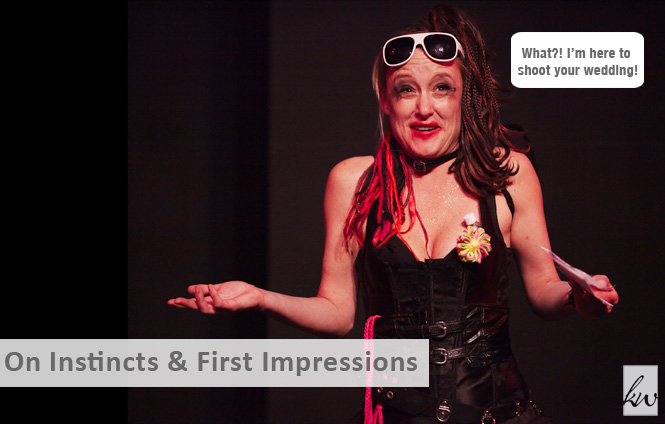











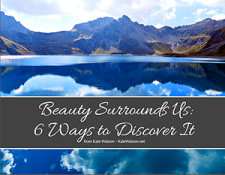
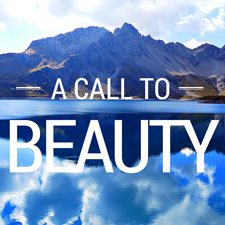
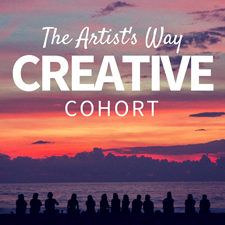
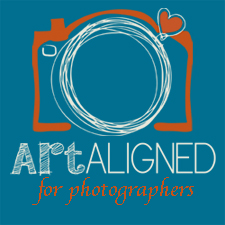






My Biggest Business Mistakes (er, Learnings) » KateWatson.net - […] of these has served me particularly well in business. As I mentioned in my business success series, trusting my intuition always worked out […]